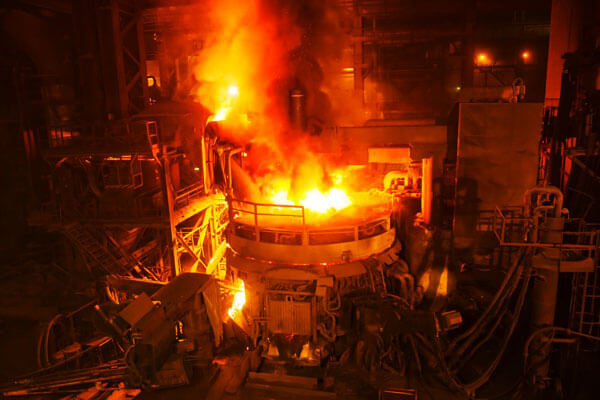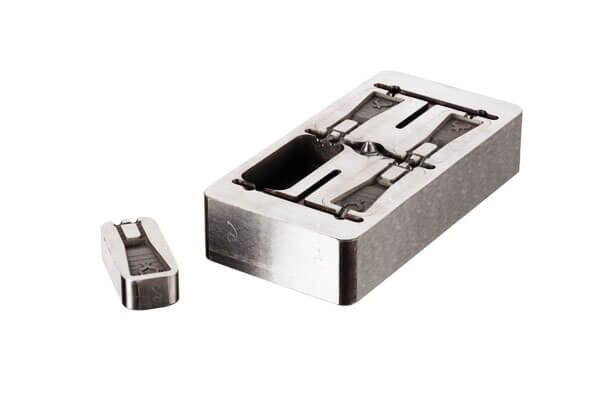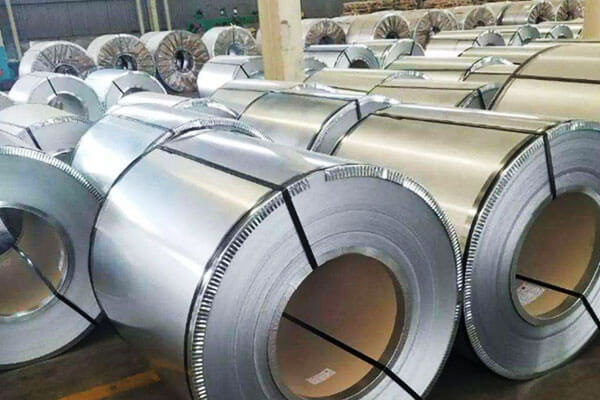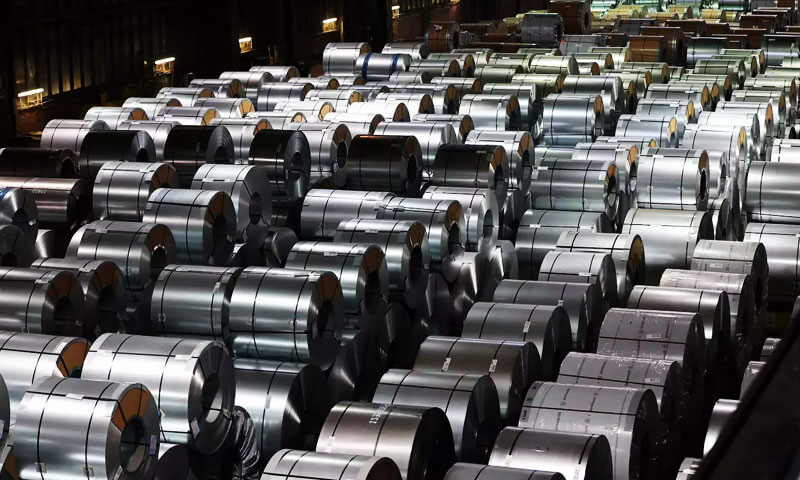Indledning
I 1889, at the Paris World Exposition, a towering steel structure stunned the world—the Eiffel Tower.
Composed of 18,038 wrought iron components, Dette ingeniørundervisning symboliserede ikke kun højdepunktet i strukturel innovation, men markerede også menneskehedens officielle indtræden i stålalderen.
Fra rammerne af skyskrabere til de komplicerede komponenter i medicinsk udstyr, Stål har gennemsyret alle aspekter af moderne civilisation med sin uerstattelige rolle.
Ud over at forme industriel udvikling, Det har været en drivende kraft bag den globale infrastrukturudvidelse og teknologiske fremskridt.
Denne artikel dykker ned i den videnskabelige karakter af stål, dens fremstillingsteknikker, Industriel udvikling, og fremtidige tendenser,
afslører, hvordan dette væsentlige materiale fortsætter med at definere grænserne for den menneskelige civilisation.
1. A Historical Review of Steel
Menneskelig udforskning af stål stammer tilbage til 1800 BCE i Anatolia, Men den sande industrielle revolution begyndte i det 19. århundrede.
I 1856, Henry Bessemer opfandt Bessemer Converter, som øgede stålproduktionseffektivitet tyvefoldigt,
Accelerer direkte den hurtige udvikling af jernbaner, skibsbygning, og maskinteknik.
I det 20. århundrede, den udbredte vedtagelse af Kontinuerlig casting -teknologi yderligere forbedret produktionseffektivitet, reduceret materialeaffald, og forbedret produktkvalitet.
I det 21. århundrede, Den globale stålindustri har gennemgået en betydelig transformation.
Kina er dukket op som den dominerende styrke, redegør for 53.9% af global rå stålproduktion i 2023.
På samme tid, Stramning af miljøregler og kulstofneutralitetsmål skubber industrien mod lavt kulstofindhold og intelligent fremstilling.
En gennemgang af Steel's udviklingshistorie viser, at hvert teknologisk gennembrud dramatisk har udvidet sine applikationer,
Tilladelse af stål at trænge ind ud over traditionel konstruktion til rumfart, medicinsk udstyr, og sektorer ved vedvarende energi.
2. Steel Manufacturing Processes
Moderne stålproduktion er et meget sofistikeret industrielt system, der integrerer materialevidenskab, Engineering Precision, og miljømæssig bæredygtighed.
Dens kernefaser inkluderer udvælgelse af råmateriale, smeltning, Raffinering, og formning, såvel som bæredygtig og cirkulær økonomi praksis.
Raw Materials & Ekstraktion
Kvaliteten af jernmalm, kokskul, og legeringselementer bestemmer de endelige egenskaber af stål.
For eksempel, Høj renhed Jernmalm med en høj Fe -indhold reducerer betydeligt urenheder, Forbedring af mekanisk styrke og korrosionsbestandighed.
Fra 2024, Global jernmalmproduktion er nået 2.2 milliarder tons, med ressourcefordeling
og ekstraktionsomkostninger ved at spille en afgørende rolle i udformningen af det konkurrenceprægede landskab i stålindustrien.
Ironmaking & Steelmaking Processes
Moderne stålproduktion er primært afhængig af Blastovne (Bf), Direkte reduceret jern (DRI), og Grundlæggende iltovne (Bof).
DRI technology has become an essential method for green steel production, as it reduces carbon emissions by 30% compared to traditional blast furnaces.
Derudover, Elektriske lysbueovne (EAF), which utilize recycled scrap steel, have increased their global production share to 28%,
significantly lowering energy consumption and contributing to a more sustainable production model.

Raffinering & Formning
Once molten steel undergoes secondary refining, it is processed through continuous casting and rolling to produce high-precision materials
såsom ultra-thin stainless steel sheets og aerospace-grade high-strength steel.
Advanced cooling control techniques improve grain structure and fatigue resistance, making steel products more suitable for extreme environments.
Bæredygtighed & Cirkulær økonomi
Steel recycling is a cornerstone of modern industry sustainability.
Every ton of recycled steels prevents the emission of approximately 1.5 tons of CO₂, at reducere branchens carbon -fodaftryk betydeligt.
For tiden, de Global stålgenbrugsfrekvens er nået 85%, Forstærkning af overgangen mod grønnere og mere effektiv stålproduktion.
3. Classifying Steel: Types and Their Unique Characteristics
Stål står som et af de mest alsidige materialer i moderne teknik, og dens uendelige tilpasningsevne stammer fra den nøjagtige kontrol over dens kemiske sammensætning.
Ved at variere kulstofindholdet og tilføje forskellige legeringselementer, Producenter skaber stål med unikke egenskaber, der er skræddersyet til specifikke applikationer.
Kulstofstål
Kulstofstål Tjener som grundlaget for utallige applikationer på grund af dens balance mellem styrke og duktilitet.
Dens egenskaber afhænger primært af kulstofindholdet, som typisk spænder fra 0.05% til 2.0%.

Lavt kulstofstål (Mildt stål):
- Egenskaber: Indeholder mindre end 0.3% kulstof, Gør det meget formbart, let at danne, og svejselig.
- Applikationer: Brugt i vid udstrækning i billegemer, Strukturelle bjælker, and consumer goods where high strength is not the primary concern.
- Datapunkt: Low-carbon steel often exhibits a yield strength of around 250–350 MPa,
making it ideal for applications where moderate strength and excellent formability are required.
Medium-carbon stål:
- Egenskaber: With carbon content between 0.3% og 0.6%, this steel offers an enhanced strength profile and improved wear resistance, although its ductility decreases.
- Applikationer: Often used for automotive components like gears and shafts, as well as in the manufacture of railway tracks.
- Datapunkt: Typical tensile strengths range from 400–600 MPa, providing a balance between strength and ductility.
Stål med høj kulstof:
- Egenskaber: Contains between 0.6% og 2.0% kulstof, resulting in increased hardness and wear resistance, though it sacrifices ductility.
- Applikationer: Ideal for cutting tools, Springs, og ledninger med høj styrke, where durability under stress is critical.
- Datapunkt: High-carbon steels can achieve tensile strengths over 800 MPa after appropriate heat treatment, making them perfect for heavy-duty applications.
Legeringsstål
Legeringsstål enhances the basic properties of carbon steel by adding elements such as manganese, Krom, nikkel, og molybdæn.
This customization allows for tailored performance attributes like improved toughness, Varmebestandighed, og korrosionsbestandighed.

Lavlegeret stål:
- Egenskaber: Typically includes small percentages (op til 5%) of alloying elements that boost strength without a significant loss in ductility.
- Applikationer: Brugt i strukturelle applikationer, rørledninger, and automotive parts where high strength and moderate toughness are necessary.
Stål med høj allegeret:
- Egenskaber: Incorporates a higher proportion of alloying elements to deliver superior performance,
including enhanced wear resistance and the ability to withstand extreme temperatures. - Applikationer: Common in the aerospace and power generation sectors, where materials must endure harsh environments.
- Datapunkt: Visse stål med høj allegering udviser udbyttestyrker, der overstiger 600 MPA og er konstrueret til at modstå deformation, selv ved temperaturer over 600 ° C.
Rustfrit stål
Rustfrit stål skelner sig selv ved dens fremragende korrosionsbestandighed, opnået ved mindst at inkorporere 10.5% Krom ind i legeringen.
Kromet danner et passivt lag med kromoxid på overfladen, Beskyttelse af materialet mod rust og miljøforringelse.

Austenitisk rustfrit stål:
- Egenskaber: Ikke-magnetisk, meget modstandsdygtig over for korrosion, og bemærkede for sin fremragende formbarhed og svejselighed.
- Applikationer: Bredt brugt i køkkenapparater, Kemisk behandlingsudstyr, og medicinsk udstyr.
- Datapunkt: Karakterer som 304 og 316 Rustfrit stål viser ofte en trækstyrke i området 500–750 MPa,
Kombineret med enestående korrosionsbestandighed i forskellige miljøer.
Martensitisk rustfrit stål:
- Egenskaber: Tilbyder højere hårdhed og styrke sammenlignet med austenitiske typer, Selvom det er mindre korrosionsbestandigt og vanskeligere at svejse.
- Applikationer: Almindeligvis findes i skæreværktøjer, Kirurgiske instrumenter, og miljøer med høj slår.
- Datapunkt: Typiske hårdhedsværdier kan nå op til 600 HRC efter varmebehandling, Gør dem velegnet til applikationer med højtydende.
Ferritisk rustfrit stål:
- Egenskaber: Magnetisk og mindre duktil end austenitisk rustfrit stål, men tilbyder god modstand mod stresskorrosion revner.
- Applikationer: Anvendt i biludstødningssystemer og industrielt udstyr, der kræver moderat styrke med god korrosionsbestandighed.
Duplex rustfrit stål:
- Egenskaber: Kombinerer det bedste fra austenitisk og ferritisk rustfrit stål, Tilbyder høj styrke og forbedret modstand mod korrosion og stress korrosion revner.
- Applikationer: Ideel til kemisk behandling, Offshore -strukturer, og marine applikationer.
- Datapunkt: Duplex -stål kan ofte prale af udbyttestyrker mellem 550-750 MPa, markant overgået mange austenitiske stål med hensyn til styrke.
Tool and High-Speed Steels
Værktøjsstål og Højhastighedsstål er specialiserede legeringer designet til fremstilling af skæreværktøjer, dør, og forme.
They require exceptional hardness, slidstyrke, and the ability to retain strength at high temperatures.

Værktøjsstål:
- Egenskaber: Formulated with tungsten, Molybdæn, Vanadium, and cobalt, these steels excel in hardness and durability under extreme conditions.
- Applikationer: Employed in the production of hand tools, dør, and other precision tooling required for high-pressure applications.
- Datapunkt: Some tool steels achieve hardness levels exceeding 65 HRC, making them capable of enduring prolonged use without significant wear.
Højhastighedsstål (HSS):
- Egenskaber: Known for its ability to maintain hardness even at high temperatures, HSS is critical for high-speed machining and cutting applications.
- Applikationer: Frequently used in drill bits, end mills, and other cutting tools in manufacturing processes.
- Datapunkt: High-speed steels typically sustain operating temperatures up to 600°C while retaining their cutting performance, thereby increasing production efficiency.
4. Unpacking Steel’s Physical and Mechanical Properties
I dette afsnit, we break down the essential physical and mechanical properties of steel, highlighting how these characteristics drive its diverse applications.
Fysiske egenskaber
Density and Weight
- Steels boasts a density of approximately 7.85 g/cm³, which strikes an excellent balance between robustness and manageability.
This optimal density enables engineers to design structures that support heavy loads without incurring excessive weight. - For eksempel, when constructing bridges or high-rise buildings, steel’s density allows for significant load-bearing capacity while maintaining structural efficiency.
Melting Point and Thermal Stability
- With a melting point that typically ranges between 1,370°C and 1,510°C, steel withstands extreme temperatures with ease.
This high melting point ensures that steels components remain stable even in high-heat environments such as turbine engines or industrial furnaces. - Desuden, the thermal stability of steel is critical in applications like automotive components and power plants, where consistent performance under heat is essential.
Termisk ledningsevne
- Steel generally exhibits a thermal conductivity around 50 W/m · k, which allows it to effectively transfer heat.
This property makes steel an ideal choice for applications that demand efficient heat dissipation, such as heat exchangers and engine parts. - Derudover, effective thermal conductivity helps minimize hotspots during high-speed machining and industrial processing.
Koefficient for termisk ekspansion
- Steel’s coefficient of thermal expansion, tilnærmelsesvis 11-13 µm/m · ° C., ensures that it maintains dimensional stability under varying temperature conditions.
This stability is particularly important in precision engineering and construction, where even minor distortions can compromise structural integrity.
Magnetiske egenskaber
- Steel’s inherent ferromagnetic properties allow it to be easily magnetized.
This attribute proves invaluable in the design of electric motors, Transformatorer, and various electronic components, where controlled magnetic behavior is essential.
Mekaniske egenskaber
Træk- og udbyttestyrke
- Steel stands out for its impressive tensile strength, which can range from 400 MPa to over 800 MPa after advanced heat treatments.
This strength enables steels to support massive loads, making it indispensable in large-scale construction and heavy machinery. - Desuden, the yield strength, typisk mellem 250 MPA og 350 MPa for common structural steels,
ensures that steel components resist permanent deformation under high stress.
High-strength alloys may even surpass 500 MPA, meeting the rigorous demands of aerospace and automotive applications.
Duktilitet og sejhed
- Steel’s ability to deform under tensile stress without fracturing – known as ductility – proves vital in absorbing energy during impacts.
For eksempel, advanced high-strength steels in automotive frames can absorb impact energies up to 120 kJ/cm³, thereby enhancing passenger safety. - Derudover, toughness—the capacity to withstand shock and vibration—ensures that steels can endure repetitive stress cycles,
which is critical for applications in bridges, Jernbaner, og maskiner.
Træthedsmodstand
- The cyclic loading that many structures endure requires materials that can resist fatigue over time.
Steel’s excellent fatigue resistance guarantees that components such as beams and vehicle frames remain reliable even under constant load fluctuations,
thus extending the lifespan of critical infrastructure.
Hårdhed og slidstyrke
- Steel’s hardness can be significantly enhanced through alloying and heat treatment processes, resulting in improved wear resistance.
This property is crucial for applications such as cutting tools, Gear, og lejer, where prolonged exposure to friction and stress demands a material that maintains its integrity over time. - Advanced heat treatments and alloying techniques enable certain steels to achieve hardness levels
that not only resist abrasion but also optimize performance in high-speed industrial processes.
Interplay of Properties and Their Impact
Synergistic Strength and Ductility
- The unique combination of high tensile strength and substantial ductility makes steels both robust and flexible.
This synergy allows it to support significant loads while absorbing shocks, which is critical in structures like skyscrapers and bridges.
Optimized Through Alloying and Heat Treatments
- Manufacturers continuously refine steel by adjusting carbon content and adding elements such as chromium, nikkel, og mangan.
These enhancements lead to ultra-high-strength steels that can exceed 1 GPa in tensile strength while maintaining enough ductility to withstand dynamic stresses. - Desuden, ongoing advancements in heat treatment processes have improved fatigue resistance and overall performance,
ensuring that steels remains at the forefront of engineering materials.
Thermal and Mechanical Synergy
- Steel’s ability to efficiently transfer heat complements its mechanical robustness, enabling it to perform reliably under harsh conditions.
This thermal-mechanical interplay proves essential in applications where materials
must endure both high temperatures and significant mechanical stress, such as in aerospace engines and industrial boilers.
5. Processing and Manufacturing of Steel
The continuous advancement of steel processing technology has significantly enhanced the added value of steel products, enabling higher performance, holdbarhed, og effektivitet.
Varmebehandling: Enhancing Strength and Durability
Heat treatment processes play a critical role in modifying the microstructure of steels to optimize their mechanical properties,
såsom hårdhed, sejhed, og slidstyrke. Common techniques include:
- Udglødning – Reduces internal stress, improves machinability, og forbedrer duktiliteten.
- Normalisering – Refines grain structure and improves mechanical strength.
- Slukning – Rapid cooling increases hardness and wear resistance.
- Temperering – Adjusts toughness and reduces brittleness after quenching.
For eksempel, laser quenching technology can increase the surface hardness of gears to HRC60, reducing the wear rate by 70%,
thereby extending service life in high-load applications such as automotive transmissions and industrial machinery.
Kold behandling: Improving Precision and Surface Quality
Cold processing methods refine the dimensions and surface finish of steel components, offering superior accuracy and enhanced mechanical properties. Key techniques include:
- Kold rulling – Increases strength and surface finish, commonly used in automotive panels and precision components.
- Cold Drawing – Improves dimensional accuracy and tensile strength, essential for producing fine steel wires and tubing.
- Cold Extrusion – Enhances uniformity and mechanical properties, often used in manufacturing fasteners and structural parts.
Med 5-axis CNC machining, the precision of turbine blade manufacturing can be controlled within ± 0,005 mm,
ensuring optimal aerodynamic efficiency in aerospace and power generation industries.
Overfladebehandling: Enhancing Corrosion Resistance and Aesthetic Appeal
Surface treatments provide protective layers that extend the lifespan of steel products, improve wear resistance, and enhance visual appeal. Advanced surface treatment methods include:

- Galvanisering – Zinc coating protects steel from rust and oxidation.
- Chrome plettering – Increases hardness and provides a sleek, Korrosionsbestandig finish.
- Fosfatering – Forms a protective layer that enhances paint adhesion and corrosion resistance.
Især, nano-galvanizing technology has revolutionized corrosion protection by extending the anti-corrosion cycle to 50 år while simultaneously reducing zinc consumption by 60%,
making it an environmentally sustainable solution for infrastructure and marine applications.
Welding Technology: Achieving Strong and Reliable Joints
Steel structures often require advanced svejsning techniques to ensure durability and load-bearing capacity.
The choice of welding method depends on factors such as material composition, joint design, og applikationskrav. Common welding techniques include:
- Buesvejsning – Versatile and widely used in structural steel fabrication.
- Laser svejsning – Provides high precision with minimal heat distortion, suitable for aerospace and medical components.
- Elektronstråle svejsning – Ideal for high-strength joints in vacuum environments, commonly used in aerospace and nuclear industries.
Innovationer i automated robotic welding og Friktion omrør svejsning (FSW) have further improved joint integrity and manufacturing efficiency,
making complex assemblies more reliable and cost-effective.
Præcision Manufacturing: Achieving Unprecedented Accuracy
Precision manufacturing is crucial in industries that require high-performance steel components with tight tolerances.
The development of advanced machining technologies has revolutionized the manufacturing of complex steel parts. Key techniques include:
- CNC -bearbejdning Centers – Enable high-speed, high-precision cutting and shaping.
- Wire EDM (Elektrisk decharge -bearbejdning) – Allows for ultra-fine cutting of intricate steels components.
- EDM (Elektrisk decharge -bearbejdning) – Enhances precision in hard-to-machine steel alloys.
These cutting-edge technologies have led to unprecedented improvements in the quality and performance of steels products,
enabling their widespread application in aerospace, medicinske implantater, and high-performance engineering.
6. The Global Impact and Applications of Steel
Steel’s influence spans multiple industries, each benefiting from its unique properties:
- Konstruktion og infrastruktur: Steel forms the backbone of modern urban landscapes.
Structural steel supports skyscrapers, broer, and railways, while reinforcing bars (rebar) provide essential strength to concrete structures.
For eksempel, the Hong Kong-Zhuhai-Macau Bridge utilized 2 million tons of steel, ensuring a lifespan exceeding 120 years under harsh marine conditions. - Automotive and Aerospace: High-strength steel alloys ensure vehicle safety and fuel efficiency.
I rumfart, steel contributes to lightweight, durable airframes and engine components that withstand extreme temperatures and pressures. - Manufacturing and Industrial Equipment: From machine tools to heavy-duty industrial machinery, steel’s robustness and versatility make it indispensable.
Its use in precision equipment has transformed production efficiency across the globe. - Consumer and Medical Products: Stainless steel’s corrosion resistance and biocompatibility make it ideal for kitchen appliances, medicinske implantater, og kirurgiske instrumenter.
Advanced alloys such as 316LVM provide superior performance in demanding healthcare applications.
7. Current State of the Steel Industry: En omfattende analyse
The steel industry is at a turning point, balancing technological progress with sustainability goals while adapting to shifting economic and geopolitical landscapes.
Global Market Overview: The Push for Carbon-Neutral Steel
Countries worldwide are investing in environmentally friendly steelmaking processes.
Sweden’s hydrogen metallurgical test furnace is now operational, targeting zero carbon emissions by 2030.
I mellemtiden, leading producers are implementing low-emission production techniques to meet stringent global regulations.
Supply Chain Management: Ensuring Stability and Efficiency
Raw material availability, logistics, and international trade policies remain critical factors affecting steel production.
Companies are adopting smart supply chain solutions to enhance stability and efficiency.
For eksempel, Anshan Iron and Steel’s smart factory, utilizing full-process AI, has achieved a 99.7% defect detection rate, significantly improving production accuracy and reducing waste.
Technological Innovation: The Evolution of High-Performance Steel
Cutting-edge developments are redefining the steel industry:
- Smart factories – AI-driven systems enable real-time monitoring and optimization of production.
- Let, Stål med høj styrke – Essential for the automotive and aerospace sektorer, reducing fuel consumption and improving safety.
- Nanocrystalline steel – While offering strengths above 2 GPA, it is still in early-stage development,
with production costs 40% lower than titanium alloys but facing challenges in large-scale industrial applications.
Climate Change Strategies: Industry-wide Decarbonization Efforts
The steel industry is taking proactive measures to reduce emissions:
- China’s commitment – Plans to lower carbon emission intensity by 18% ved 2030 through advanced CCUS and energy-efficient processes.
- Electrification and alternative fuels – The adoption of hydrogen-based steelmaking and expansion of Elektrisk bueovn (EAF) produktion are key to achieving net-zero emissions.
8. Future Trends and Challenges in the Steel Industry
As the steel industry evolves to meet global demand, sustainability goals, and technological advancements, it faces both transformative opportunities and significant challenges.
The sector navigates a landscape shaped by innovation, environmental policies, and shifting economic conditions.
Technological Innovation: Smart Manufacturing and High-Performance Materials
Integrationen af automatisering, kunstig intelligens (Ai), and smart factories is reshaping steel production.
AI-driven systems optimize production efficiency, Reducer affald, and enhance quality control.
Stigningen af nanocrystalline steel, boasting strengths exceeding 2 GPA, is revolutionizing high-performance applications,
potentially rivaling titanium alloys in aerospace and advanced engineering.
I mellemtiden, breakthroughs in 3D printing of steel allow for complex, lightweight designs with superior mechanical properties.
Bæredygtighedsinitiativer: Decarbonization and Green Production
In response to climate change and carbon reduction targets, the steel industry is actively adopting cleaner production technologies. Key sustainability trends include:
- Hydrogen-based steelmaking – Countries like Sweden are pioneering hydrogen metallurgy, aiming for carbon-neutral steel by 2030.
- Carbon capture, utilization, and storage (CCUS) – China’s steels sector aims to cut carbon intensity by 18% ved 2030, leveraging carbon capture and recycling technologies.
- Electric arc furnaces (EAFs) – Growing reliance on EAFs, which recycle scrap steel, reduces energy consumption and emissions compared to traditional blast furnaces.
Competitive Material Landscape: The Challenge of Alternatives
Steel faces competition from emerging materials such as kompositter, Aluminiumslegeringer, and nanomaterials, især inden for bil- og rumfartsindustrier.
Imidlertid, steel’s cost-effectiveness, holdbarhed, and recyclability continue to make it the backbone of industrial manufacturing.
Innovationer i høj styrke, lightweight steels are further enhancing its adaptability in structural applications.
Global Market Dynamics: Trade Policies and Economic Shifts
The steel industry is deeply influenced by geopolitical factors, trade regulations, and economic trends:
- Supply chain disruptions – Fluctuating raw material prices and political trade barriers impact global steels production.
- Regional growth – Rapid industrialization in Southeast Asia and Africa is driving increased steel consumption.
- Strategic alliances – Steels producers are forming global partnerships to enhance resource efficiency and market expansion.
9. Konklusion
Steel not only transformed the physical landscape—from the Eiffel Tower to modern urban skylines—but also reshaped human progress itself.
As the world transitions toward more sustainable and innovative manufacturing processes,
steel continues to evolve, driven by advancements in technology and a relentless commitment to excellence.
Its journey from ancient iron production to modern smart factories encapsulates the spirit of industrial innovation and human ingenuity.
Hvis du leder efter stål- eller stålprodukter af høj kvalitet eller stål, vælger Langhe er den perfekte beslutning til dine produktionsbehov.


